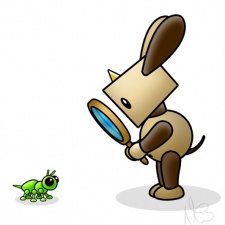So far game designer Nick Pendriis has help guide us through a world of development wonder, as his ebook So... You Want to Make Video Gamesis serialised exclusively right here on Pocket Gamer.
We've covered topics including concept, art, narrative, design, building and planning. At this stage, if you're working page-by-page, your new game will be up and running. But, as you'll find out, that doesn't mean it's ready.
Here in phase six of Pendriis's game development system, we take a look at testing and fixing your new software, before publishing it for the world to play.
Check out the earlier sections if you haven't already, and the list below shows you what's left to come in our exclusive serialisatoni of So... You Want to Make Video Games?:
- CONCEPT: Find a strong idea.
- DESIGN: Make test versions and create a blueprint.
- PLAN: Organise the project carefully.
- BUILD: Create the computer code.
- ASSETS: Create visuals, audio and words.
- TEST. FIX & PUBLISH: Look for problems, resolve them, release the game to the public.
- PROMOTE and SUPPORT: Announce the game and respond to feedback.
Here's Nick Pendriis to give you a bit more about the testing, fixing and publishing phase.
Your first app might just be for you and your friends to play. Maybe you don't plan to publish it. Still... what happens when your friend is playing and the game breaks? Or you can’t even play the game yourself. If it doesn't work, then it's not finished!
It's easy to lose sight of your achievements when you're focused on fixing problems, so stay positive at all times!
Get other people to play your game. They'll use it in ways you didn't expect. This is great for finding “bugs” (errors or problems in a piece of software).
Then, after the sweat and the tears of building and testing, comes the publishing. This falls into one of two categories, traditional or independent.
Click here to view the list »












